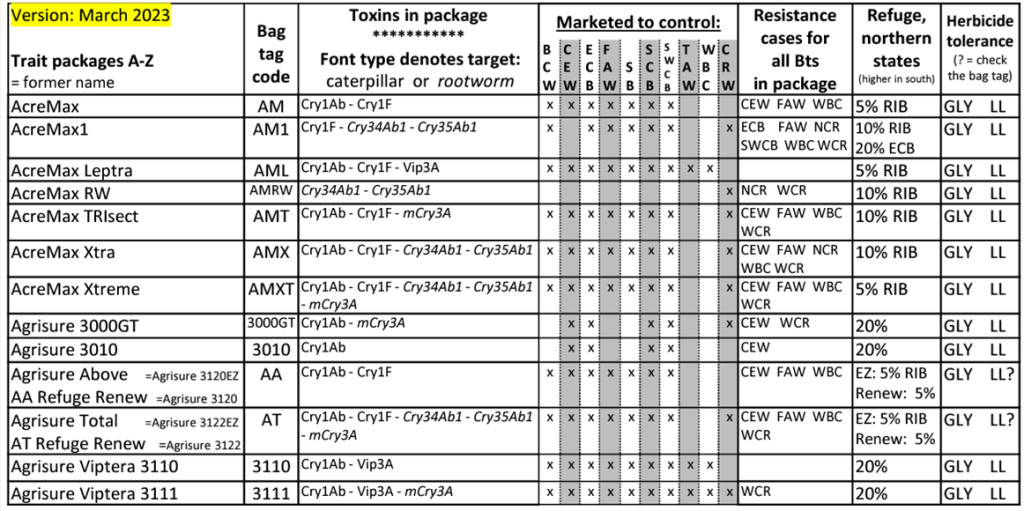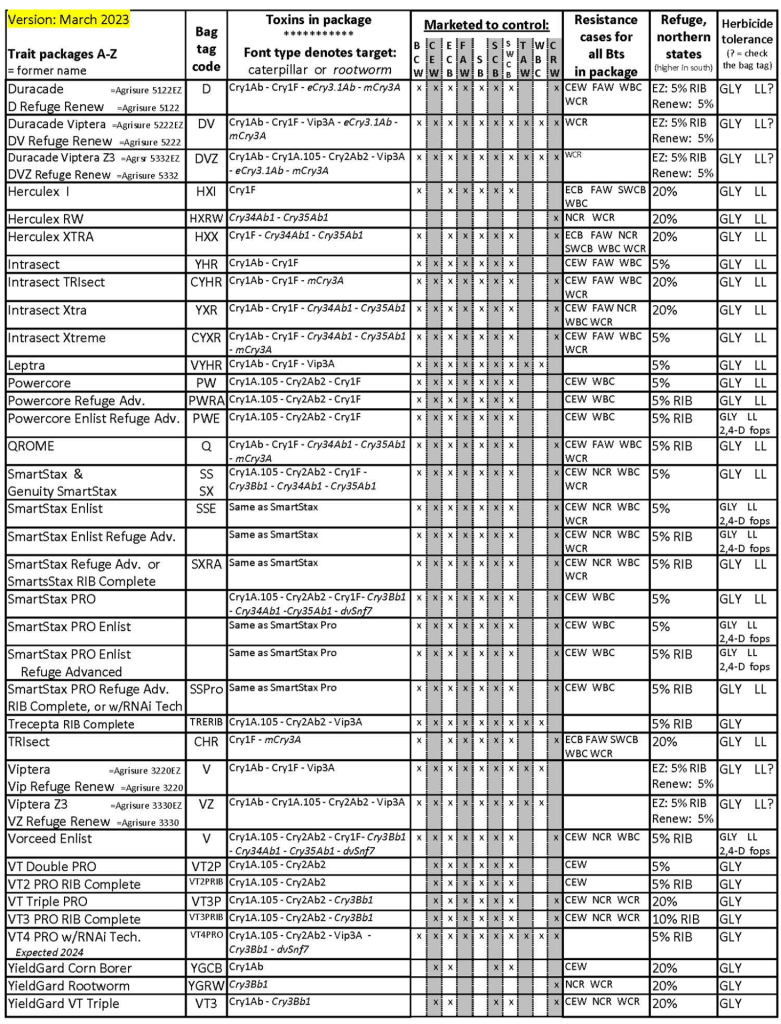Galen Dively, Professor Emeritus | galen@umd.edu
University of Maryland, College Park
Listed below are the corn trait packages to make it easier to understand seed guides, sales material and bag tags. It is an abbreviated version of the Bt trait table plus related extension materials free online at: https://www.texasinsects.org/bt-corn-trait-table.html. Information listed Includes the name of each trait package, bag tag code, Bt toxins expressed (Cry1 types and Vip3A for caterpillars, Cry3 types for rootworms), refuge requirement (RIB=% refuge in the bag or REF=% structured refuge) and herbicide tolerance (GLY= glyphosate /Roundup-Ready, LL=glufosinate/Liberty Link, 2,4D or group 1 ‘fops’ type herbicides). Note that older trait packages, with limited or no commercial availability, are listed, so you can look back and interpret previous year’s planting records, seed guides, and research results.
The widely adopted use of Bt corn has resulted in major benefits to growers and the general public. However, resistance evolution in target insect populations has become a major threat to the sustainability of these crops. In some parts of the US Corn Belt, western corn rootworm rapidly adapted to Bt corn, and currently, some populations show resistance to all commercially available Cry3 traits. The high dose expression of Cry1 and Cry2 traits continues to provide excellent control and areawide suppression of the European corn borer in the US; however, the first case of resistance to the Cry1F toxin was reported in Nova Scotia in 2018 and resistance to other Cry toxins was recently confirmed in several eastern Canadian provinces. For corn earworm, we now have widespread field-evolved resistance to all Cry toxins in Bt corn. However, the Vip3A trait still provides excellent protection against this pest but studies show early stages of resistance developing since 2017, mainly in the southern states. Fall armyworm has been targeted by the Cry1F toxin since 2003, without any evidence of field-evolved resistance until 2010 when widespread control failures in Bt corn were reported in Puerto Rico and recent studies show high levels of resistance in several southeastern U.S. states.


